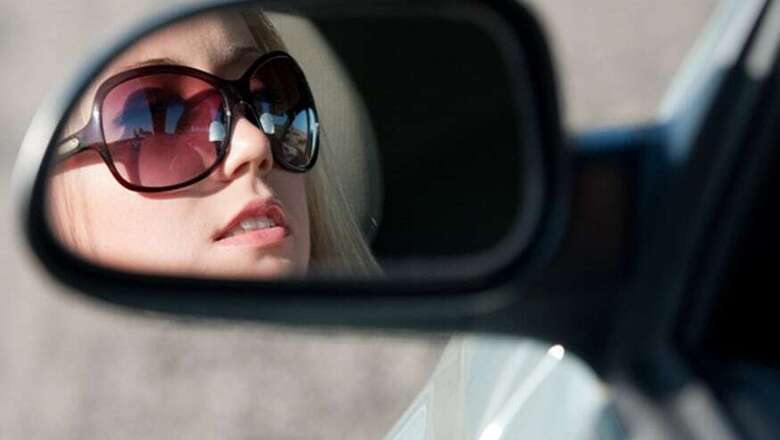
views
The sun's ultraviolet (UV) rays can cause serious damage to eyes all year round, whether in the city or on the beach. Here are a few things to consider when shopping for sunglasses to stay protected from the harmful effects of the sun in all situations.
Keep sunglasses on, even when it's cloudy
From the urban jungle to mountain peaks, whether you're strolling around town, hiking in the hills or chilling at the beach, the sun's UV rays are present all the time, even when it's cloudy. In fact, insufficiently protected eyes are at risk of photokeratitis -- effectively sunburn of the eyes -- which can be very painful, and can mean staying in a dark room for a few days to recover. And while modern windshields generally block UV rays, drivers are still at risk of being dazzled by glare in bright conditions. Note that eye color bears no relation to sun sensitivity -- it
simply varies from person to person.
Steer clear of novelty or fashion shades
Before buying a trendy new pair of shades, make sure you check their level of protection. In Europe, models offering safe levels of UV protection are stamped with the CE mark, ensuring no more than 5% of UVB rays are transmitted through the lenses. Try to avoid buying sunglasses outside of traditional retail circuits, such as from beach accessories sellers or illegal street vendors, who can easily circumvent legislation. Models with wrap-around designs -- covering the whole eye area up to the temples -- are particularly recommended to help keep UV rays from getting around the sides. The choice of model and style also depends on the type of activity the wearer has in mind, from sports to city slicking to sunbathing at the beach. In any case, fashion-conscious wearers can rest assured that a wide range of options is now available to keep eyes protected in style.
Dark lenses don't mean better protection
All kinds of lenses can block UV rays, even clear lenses, thanks to various materials and coatings. In fact, poor-quality dark lenses can prove particularly harmful. These reduce brightness without blocking UV, causing the pupil to dilate and let in more of the sun's harmful rays. Lenses should block the most UV light possible. In Europe, look for Category 3 lenses, suitable for strong brightness, or Category 4 lenses made for intense sunshine. Category 4 is the best option for high mountain conditions.
Which color lenses to choose?
Gray lenses tone down brightness while keeping colors natural and unaltered. Gray is generally recommended for farsighted wearers. Nearsighted people will be more at ease with brown shades, which reduce glare and improve contrast. Green also helps bolster contrast without distorting colors. This lens color is suitable for contact-lens wearers and the farsighted. Yellow and amber shades reduce glare but considerably heighten contrast. They are a good choice for anyone with low vision.
The right pair for each kind of activity
Manufacturers have made huge progress in recent years, offering sunglasses to suit all kinds of professional, leisure or sports activities. Polarizing lenses, for example, filter out the sun's rays as well as light reflected from water, snow, car windows and other shiny surfaces. These adaptive lenses are an ideal option for drivers and watersports fans, as the photochromic lenses adapt to different levels of ambient light, ensuring optimal comfort and protection. The lenses turn lighter in dark conditions and darken as ultraviolet light becomes stronger. This kind of lens can also be a good choice for mountain bikers, who move quickly between shady to brighter zones.
Keep kids protected
Children have increased sensitivity to UV rays until the age of around 12 because their eyes' crystalline lenses are still transparent. However, it's not that common to see kids wearing sunglasses when out and about. There's now a wide range of sunglasses available for children of all ages, with frames specially designed to fit toddlers, babies or older children. A cord or elastic strap can help keep them in place.




















Comments
0 comment